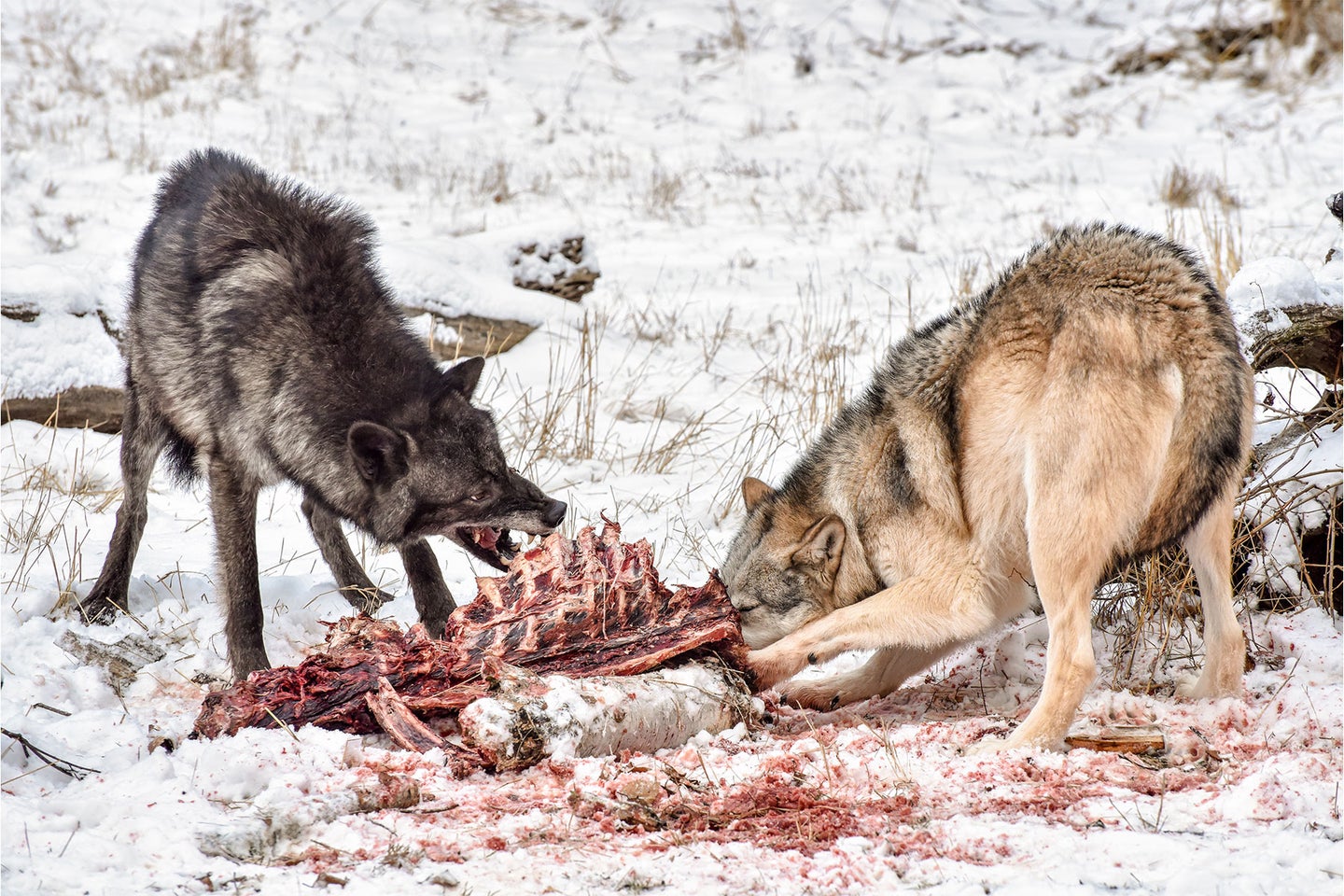Did Wolf Reintroduction Really Cause Widely-Touted “Trophic Cascades” in Yellowstone?

Wolves were reintroduced to Yellowstone in 1995. Adobe Photostock.
Did the reintroduction of wolves in Yellowstone in the 1990s create a “trophic cascade” that drastically improved the entire ecosystem? According to a recently published scientific study, perhaps not.
The findings of the study, which was completed over 20 years by Colorado State University researchers, appear to rebut a widely touted 2005 study authored by William Ripple and Robert Beschta. Ripple and Beschta found that the park’s reintroduced wolves created a “landscape of fear” that led to a “cascade” of beneficial ecological changes: predation pressure from the wolves prevented cervids from over foraging riparian habitats, which stabilized willow trees and allowed beavers— and their dams—to thrive. Environmental groups have often pointed to this research when pushing for wolf reintroductions such as the recent one in Colorado.
However the recent study suggests this understanding may be wrong. The researchers assessed riparian habitat to study the impacts of elk browsing on willow growth in northern parts of Yellowstone. They used fences and simulated beaver dams as experimental “controls.”
“We conclude that the restoration of large carnivores to the food web failed to restore riparian plant communities on Yellowstone’s northern range,” wrote the study’s authors.
“Trophic cascade in Yellowstone became true by being told many times, and people believed it whether the science was proven wrong or not. I believe you can’t attribute a causal change from wolves to willows in Yellowstone based on the science that we have done,” explains Tom Hobbs, professor emeritus with CSU’s Department of Ecosystem Science and Sustainability and the Natural Resource Ecology Laboratory, in an interview with The Coloradoan.
Hobbs notes that the findings don’t mean that wolf reintroductions won’t have beneficial impacts on their landscapes—but that such changes may be subtler and take more time to come to fruition than previously thought.
Read Next: The Future of 28 Million Acres of Public Land in Alaska Hangs in the Balance
“In the long term, evidence suggests intact food webs including apex predators, are healthier than ones without,” he says. “People just need to realize there is no quick fix to these food webs just by putting wolves back on the landscape because science has proven that is just not true.”
The post Did Wolf Reintroduction Really Cause Widely-Touted “Trophic Cascades” in Yellowstone? appeared first on Field & Stream.
Articles may contain affiliate links which enable us to share in the revenue of any purchases made.
